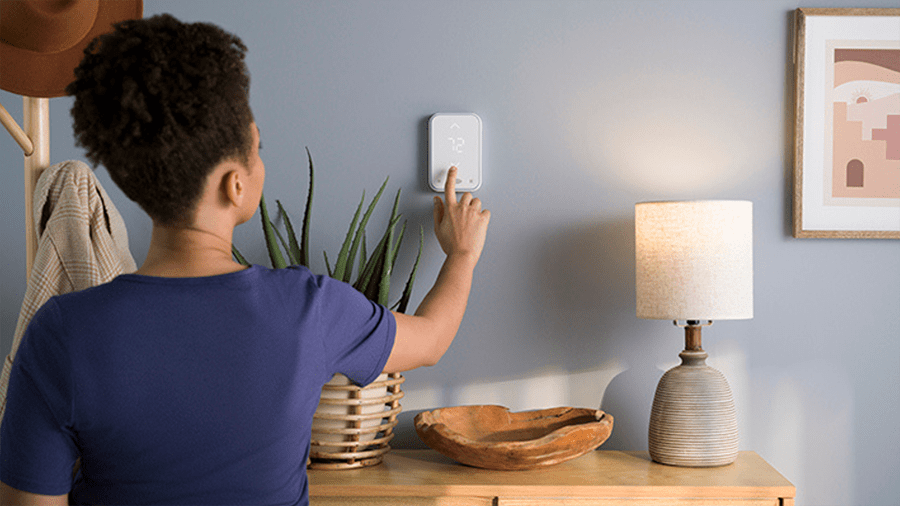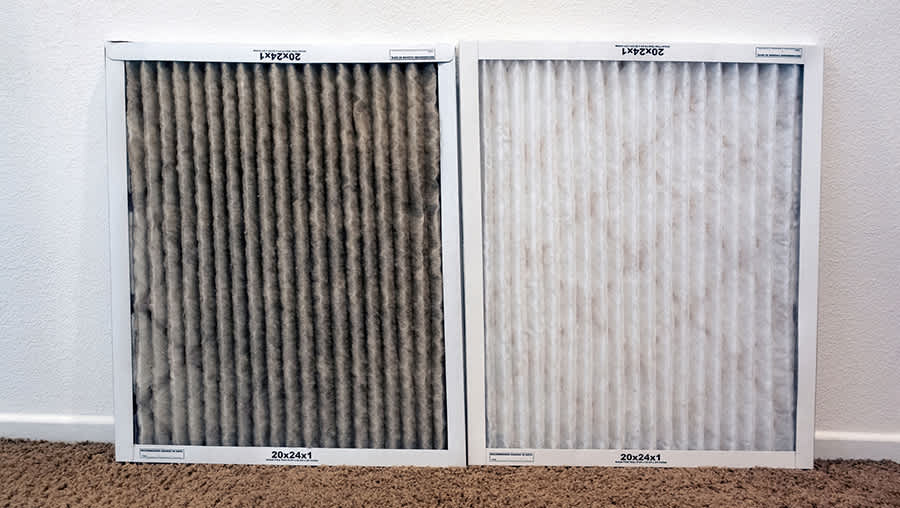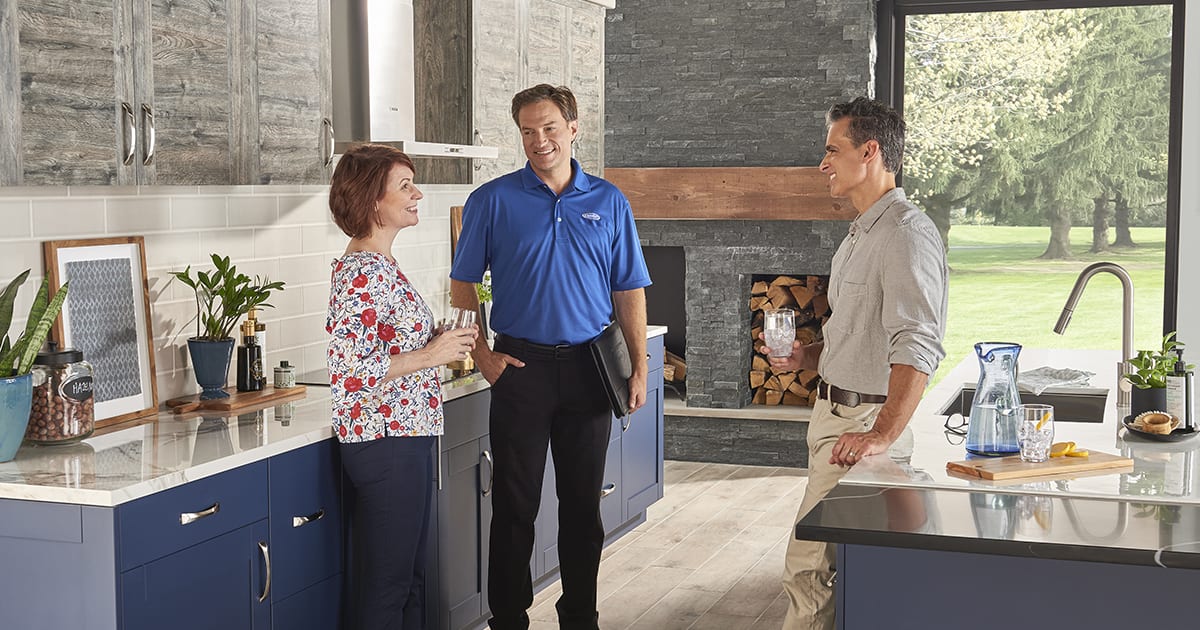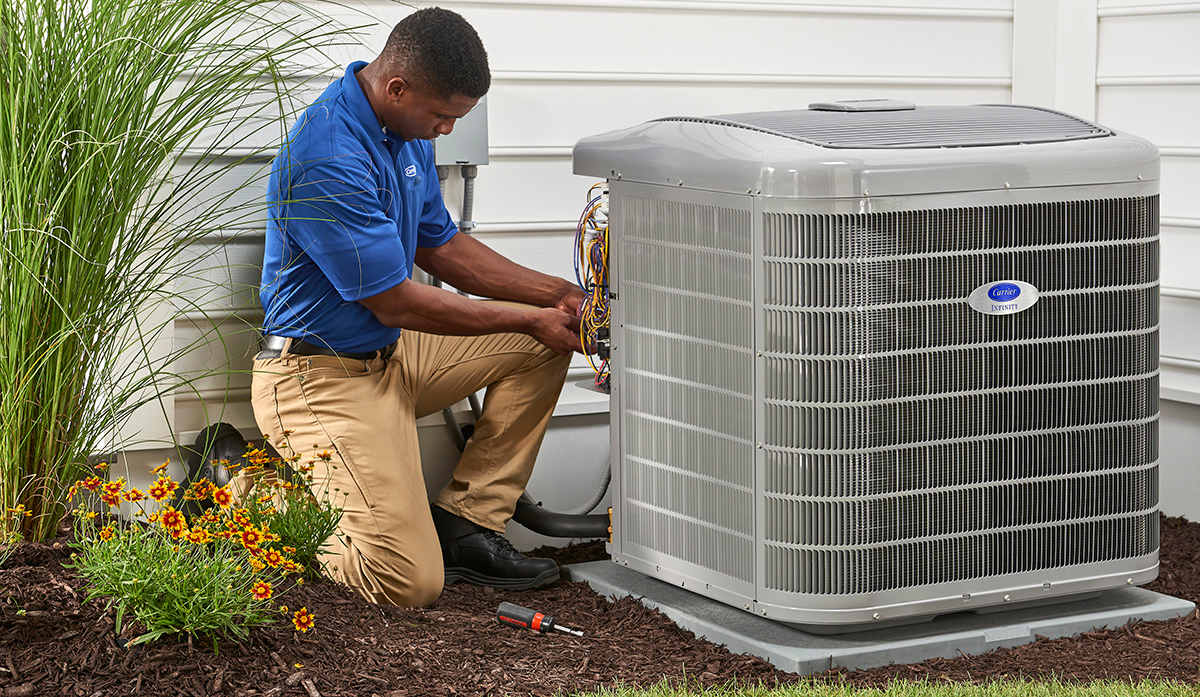Why is My AC Not Blowing Cold Air?
We’ve all been there. Sweating through a sleepless night...or slogging through the heat of a sweltering July afternoon, wondering why my AC is not cooling. It’s no fun when your AC is not cooling your house, but it can happen. And when it does, it’s not going to be in the dead of winter. It’ll be the hottest day of the summer, and no matter how many times you turn down the thermostat you still find the AC not blowing cold air.
If your AC is running but not cooling, it could be due to a dirty air filter, incorrect thermostat settings, a malfunctioning thermostat, a refrigerant leak, dirty condenser coils, blocked vents or ducts, a faulty compressor, frozen evaporator coils, or electrical issues.
Keep reading to dig into the most common culprits of HVAC units not blowing cold air. Or contact your local Carrier dealer to further diagnose the root cause of the issue.

7 Reasons Why Your AC Is Not Cooling Your House
From very simple issues like a thermostat set incorrectly or a dirty filter...to a more complex situation that requires replacing components...there are a wide variety of reasons why you may find your AC running but not cooling the house. We’ll outline some items you should check before calling a professional here. For a little more detail, visit our troubleshoot an air conditioner page.
1. Thermostat is Set Incorrectly
When you notice your home getting a little hotter than normal, first check the thermostat settings. Be sure it is set to cool. If the thermostat is set to cool, check the temperature setting to be sure someone hasn’t changed it. If it is off, set to heat, or set for constant fan (sometimes simply labeled “on”), switch it back to cooling operation. After the system kicks on, wait a few minutes, then check for cold air blowing from the registers. If it’s cold, problem solved! If not, move on to the next troubleshooting tip – checking the air filter.

2. Dirty Air Filter
Your AC system may include an air filter located in or around the indoor air handler unit. The filter catches dirt, dust and other airborne particles as they enter the air handler unit. It keeps the components inside the system cleaner and operating more efficiently and can help keep the air in your home cleaner as well. A dirty air filter can block airflow and reduce cooling to your home. In more extreme cases it can cause the system to shut down completely.
If your thermostat checks out and you still don’t have cool air, locate your system’s air filter, turn the system off, remove the filter and inspect. If, after you are satisfied that you have a clean air filter and your central air conditioner does not cool your home, you’ll have to dig a little deeper to locate the problem.

3. The Outdoor Condenser Unit is Blocked
As previously described, your central air conditioning system likely includes an outdoor condenser unit. The exterior of the condenser unit features a large outdoor coil, which wraps most of the way around the outside of the unit. The coil includes a series of thin metal “fins” which are spaced very tightly together. If you have an AC running but not cooling, one issue could be a blocked or clogged condenser coil. When operating correctly, the condenser fan draws air into the outdoor unit through the condenser coil to pull heat energy out of your home. Dirt, grass and other airborne debris can accumulate between the fins, clogging the coil. A dirty coil can lead to reduced energy efficiency, lack of cool air from the registers, or in extreme cases, complete system shutdown or damage to the compressor from overuse. You can attempt to clean the coil by clearing away debris, carefully vacuuming the coil with a brush attachment or rinsing gently with a hose. If you still have an air conditioner not blowing cold air, it’s probably time to call a professional HVAC contractor.
4. Damaged Heat Pump
In some cases, your outdoor unit might be a heat pump . A heat pump looks just like an AC unit, with some different components inside that allow it to both cool and heat your home. In cooling operation, it operates just like an air conditioner system’s condenser unit and is subject to the same issues – dirty, clogged coil, frozen coil, refrigerant leaks, compressor malfunctions, etc. If your heat pump system isn’t cooling, check thermostat settings, the air filter, and the condenser unit for previously described issues. If everything checks out and you’re still sweating inside, call your local HVAC dealer.

5. Evaporator Coil is Frozen
The indoor component of your central air conditioning system will include an evaporator coil. If your indoor unit is a furnace, the evaporator coil sits in its own cabinet, outside the furnace. If the indoor unit is a fan coil (typically as part of a heat pump system), the evaporator coil sits inside the fan coil cabinet. Warm indoor air passes through the evaporator coil where heat energy and humidity are removed from the air. Cooler, more comfortable air is then circulated back to your home. Signs of a frozen evaporator coil include:
- Frost forming on the copper refrigerant tubing coming from the coil cabinet
- Inadequate cooling
- Higher utility bills
- Excessive condensate drainage near your indoor unit
- In extreme cases, frost forming on exterior refrigerant tubing or the outdoor unit
Because accessing the evaporator coil is difficult, resolving issues associated with a frozen evaporator coil are best handled by an HVAC professional. Learn more about how to troubleshoot a frozen evaporator coil.
6. Refrigerant Leak
Refrigerant is a chemical that is critical to the cooling process. It flows through the system’s indoor and outdoor coil, changing from liquid to gaseous form, drawing heat energy and humidity from indoor air and releasing it outside. Depending upon its severity, a refrigerant leak can contribute to your AC system not blowing cold air, your system may run for longer periods of time without adequately cooling your home, or it can cause a damaged or failed compressor and complete system shutdown.
Checking and resolving issues involving refrigerant levels in your system is another job for your local Carrier dealer.
7. Undersized Air Conditioner
Air conditioners are “sized” according to the amount of cooling they can provide as measured in BTUh (British Thermal Units per hour). Under moderate conditions, you may not notice any issues with an undersized air conditioner. However, as temperatures rise outside, your AC may run for long periods of time and struggle to keep you cool.
You might be able to determine the size of your AC unit from the rating info on the cabinet panel, but it will be difficult to determine whether it is the “right size” for your home. There are a number of factors involved in sizing a system for your home, including square footage, quality of construction and insulation, local climate, and more.
If your system is undersized, it may be possible to provide cooling in problem areas by adding a ductless unit to help out in “hot spots”. Or, it may be better to replace the system with one that is correctly sized. The best way to address sizing issues is to contact a qualified HVAC professional who can accurately assess your home and its optimum cooling capacity.

What To Do if Your Central Air is Not Cooling
- Adjust thermostat settings to ensure the temperature is set correctly and that the system is in cooling mode.
- Change dirty air filters to improve airflow and prevent the AC from overworking.
- Clean condenser coils to prevent reduced efficiency due to dirt buildup.
- Inspect for leaks or low refrigerant levels; if you suspect a refrigerant issue, a professional will need to refill and fix the leak.
- Call a professional if the AC is running but still not cooling properly, or if it completely stops working.
AC Not Cooling? Get Help With Air Conditioner Not Blowing Cold Air
If you’ve exhausted the options outlined previously and are still thinking "I can't figure out why my AC is not cooling", it’s time to call a Carrier HVAC dealer. It’s important for your comfort, but also for the health of your AC system. Continuing to run your AC when it’s not properly cooling your house can take a minor issue and turn it into a major component failure or system replacement. Your local Carrier dealer has the knowledge and expertise to figure out why you have an air conditioner not blowing cold air and help remedy the issue.
You may also want to check out our mini split ac repair and troubleshooting guide.

Frequently Asked Questions About AC Running But Not Cooling
To reset your central AC that’s not blowing cold air, set your thermostat to the “off” position to stop the cooling cycle. Turn off the power to your central AC unit at the breaker box. Leave the power off for about 5 minutes to allow the system to reset. Then, switch the breaker back to the “on” position to restore power to the unit. Set the thermostat to “cool” mode and adjust the temperature to be lower than the current room temperature. Allow the system a few minutes to start up and begin blowing cold air. If the AC still isn’t blowing cold air after resetting, consult a professional HVAC contractor for further diagnosis and repair.
Learn More About Air Conditioners
- See all Carrier Air Conditioners
- Learn about AC Maintenance
- Get details about an Air Conditioner Tune Up
- Find out How Do Air Conditioners Work
- Learn why is my AC blowing hot air?
- Find out What is Central Air and How Does It Work?
- Find out how to Troubleshoot an Air Conditioner
- Learn about Frozen Coils On Air Conditioner
- Discover causes of an AC short cycling
- Understand why does my AC smell?
- Discover the reasons for an AC leaking water
- Carrier's thoughts on the Best Temperature for AC
- What is a Split System HVAC?
- Need help with your Air Conditioner Fan Not Working?
- How Long Do Air Conditioners Last?
- What Size AC Unit Do I Need?
- Learn about Carrier AC Filters
- In need of air conditioner parts or equipment?
- How to Change Air Conditioner Filters

